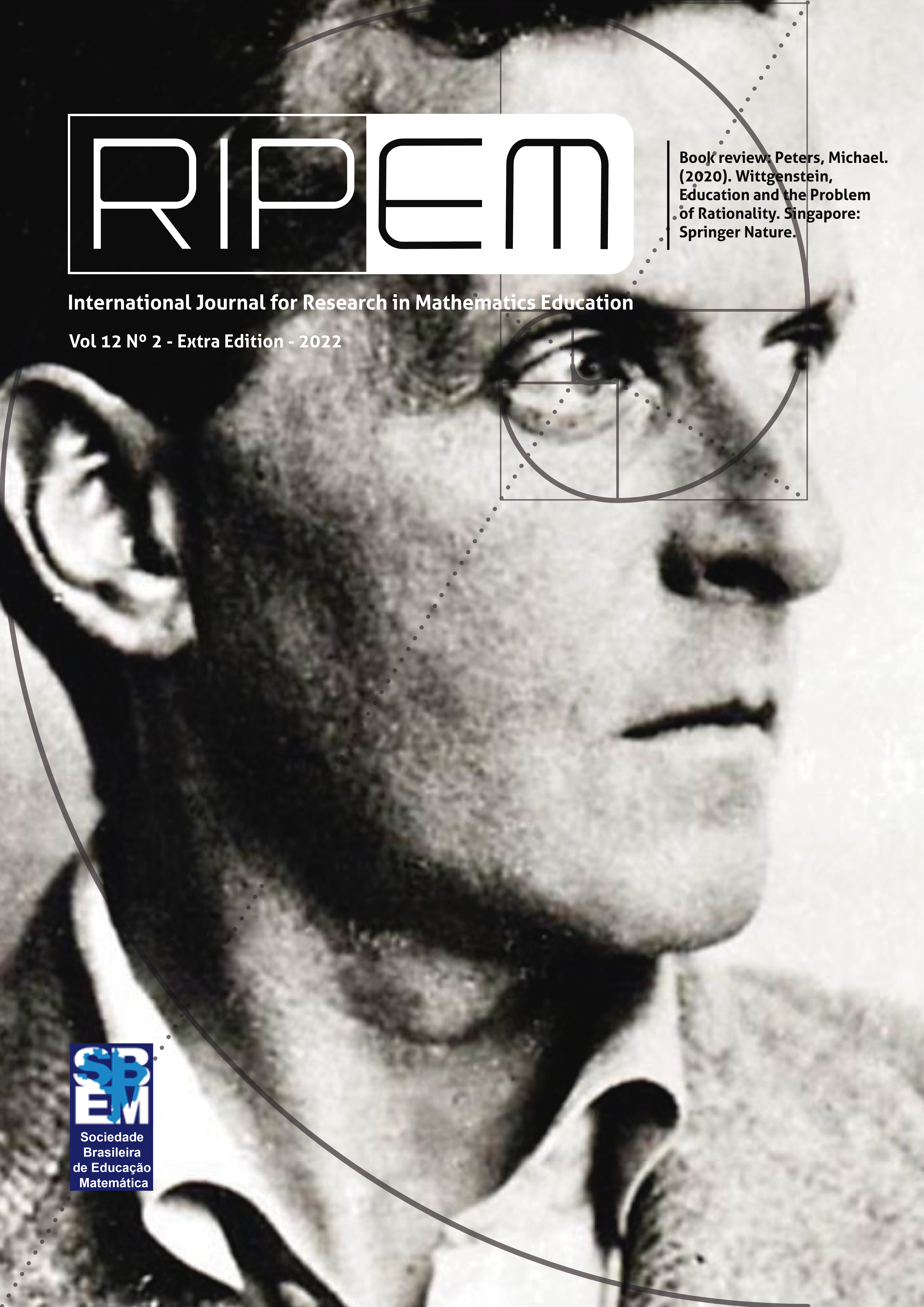The theory of figural concepts and GeoGebra in the study of parables: an experience with undergraduate students in Mathematics
DOI:
https://doi.org/10.37001/ripem.v12i2.2893Keywords:
Parables, Theory of Figural Concepts, Didactic Engineering, GeoGebra, Mathematics TeachingAbstract
This work comes from a pilot project of a master's research, carried out with undergraduate students in Mathematics at the State University of Ceará (UECE), scholarship holders of the Institutional Program for Teaching Initiation Scholarships (PIBID). The objective of this work is to recognize the epistemic conceptions of mathematics teachers in initial formation based on their actions and strategies to solve a problem-situation involving parables, analyzed from the Theory of Figural Concepts. In order to achieve this goal, we used the GeoGebra software as a didactic resource, in its versions, software for computers and application for smartphones. The methodology used in this study was Didactic Engineering, in its four phases - preliminary analysis, design and a priori analysis, experimentation and a posteriori analysis and validation - in which students built the structure of a car headlight using the content of parables in a geometric perspective using GeoGebra. The results point to the need to understand the parabola beyond a curve that represents the graph of a quadratic function, as well as a further study of its properties and applications.
Downloads
References
Almouloud, S. A. (2016). Modelo de ensino/aprendizagem baseado em situações-problema: aspectos teóricos e metodológicos. Revemat: Revista Eletrônica de Educação Matemática, 11(2), 128-141.
Almouloud, S. A., & Coutinho, C. Q. S. (2008). Engenharia Didática: caracterÃsticas e seus usos em trabalhos apresentados no GT-19 / ANPEd. Revemat: Revista Eletrônica de Educação Matemática, Florianópolis, 3(1), 62-77.
Almouloud, S. A., & Silva, M. J. F. (2012). Engenharia didática: evolução e diversidade. Revemat: Revista. Eletrônica de Educação Matemática, 7(2), 22-52.
Alves, F. R. V. (2019). Visualizing the Olympic Didactical Situation. (ODS): Teaching Mathematics with support of GeoGebra software. Acta Didactica Napocensia, 12(2), 97-116.
Alves, F. R. V., & Pereira, A. C. C. (2016). Ensino de Geometria AnalÃtica: alguns pressupostos da Sequência Fedathi no contexto da formação do professor de matemática. Revista Eletrônica Debates em Educação CientÃfica e Tecnológica, 6(2), 26-45.
Artigue, M. (1988). Ingénierie Didactique. Recherches en Didactique des Mathématiques. Grenoble: La Pensée Sauvage-Éditions, 9(3), 281-308.
Artigue, M. (1996). Engenharia Didáctica. In: Brun, J. (Org.). Didáctica das matemáticas. Tradução de Maria José Figueiredo. Lisboa: Instituto Piaget, 193-217.
Bermúdez, E. A., & Mesa, J. H. L. (2018). Estudio histórico, epistemológico y didáctico de la parábola. Práxis & Saber, 9(19), 63-88.
Brasil. (2018). Base Nacional Comum Curricular.
Ceará. (2009). Conselho Estadual de Educação. Câmara da Educação Superior e Profissional. Parecer nº 0024/2009.
Ceará. (2019). Programa da Disciplina de Geometria AnalÃtica Vetorial. Fortaleza: Universidade Estadual do Ceará - UECE.
Cerqueira, A. A. (2015). Parábola e suas aplicações. Master dissertation, Universidade Federal da Bahia, Salvador.
Costa, A. P. (2020). Pensamento Geométrico: em busca de uma caracterização à luz de Fischbein, Duval e Pais. Revista Paranaense de Educação Matemática, 9(18), 152-179.
Duval, R. (2012). Registros de representação semiótica e funcionamento cognitivo do pensamento. Revista Eletrônica de Educação Matemática – Revemat, 7 (2), 266-297.
Duval, R. (2011). Ver e ensinar a matemática de outra forma: entrar no modo matemático de pensar os registros de representações semióticas. Tradução Marlene Alves Dias. São Paulo: PROEM.
Fischbein, E. (1993). The Theory of Figural Concepts. Educational Studies in Mathematics, 24(2), 139-162.
Fischbein, E. (1999). Intuitions and Schemata in Mathematical Reasoning. Educational Studies in Mathematics, 38(11), 11-50.
Guedes, P. C. C. (2015). Aplicação do software GeoGebra ao ensino da geometria analÃtica. Ciência e Natura, Santa Maria, 37 - Edição Especial PROFMAT, 365–375.
Louzada, S. (2013). Relações entre cônicas e funções no ensino médio. Master dissertation, Universidade Federal do EspÃrito Santo, EspÃrito Santo.
Macedo, H. R. (2015). Estudo sistemático das parábolas. Master dissertation, Universidade Federal da ParaÃba, João Pessoa.
Nagpal, S. (2021). The Bright Side: Projector vs Reflector Headlight. Go Mechanic Blog.
Pais, L. C. (1996). Intuição, experiência e teoria geométrica. Revista Zetetiké, 6.
Siqueira, C. A. F. (2016). Um Estudo Didático das Cônicas: Quadros, Registros e Pontos de Vista. Master dissertation, PontifÃcia Universidade Católica de São Paulo, São Paulo.
Vargas, A. F., & Leivas, J. C. P. (2019). SuperfÃcies quádricas e o Ensino de Geometria AnalÃtica: interseções na pesquisa. Revista REAMEC, Cuiabá - MT, 7(3), 37-55.
Venturi, J. J. (2003). Cônicas e Quádricas. 5 ed. Curitiba: Livrarias Curitiba.
Published
How to Cite
Issue
Section

This work is licensed under a Creative Commons Attribution-NonCommercial-NoDerivatives 4.0 International License.








